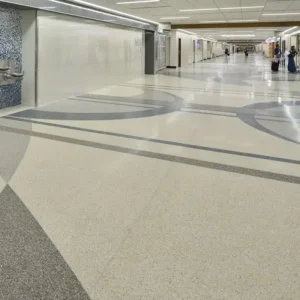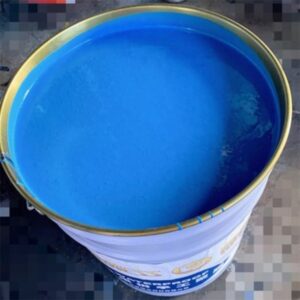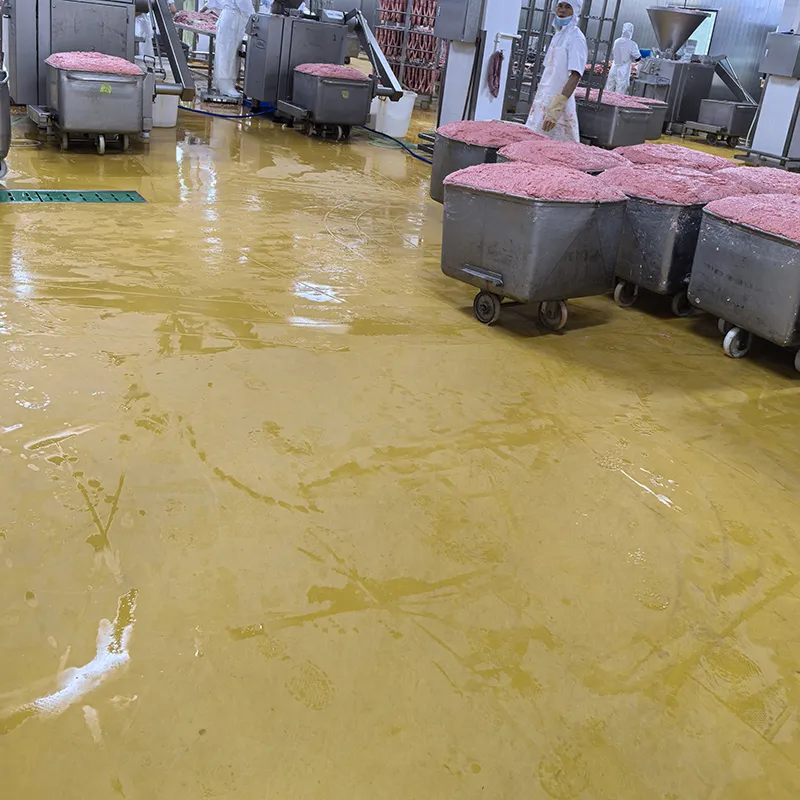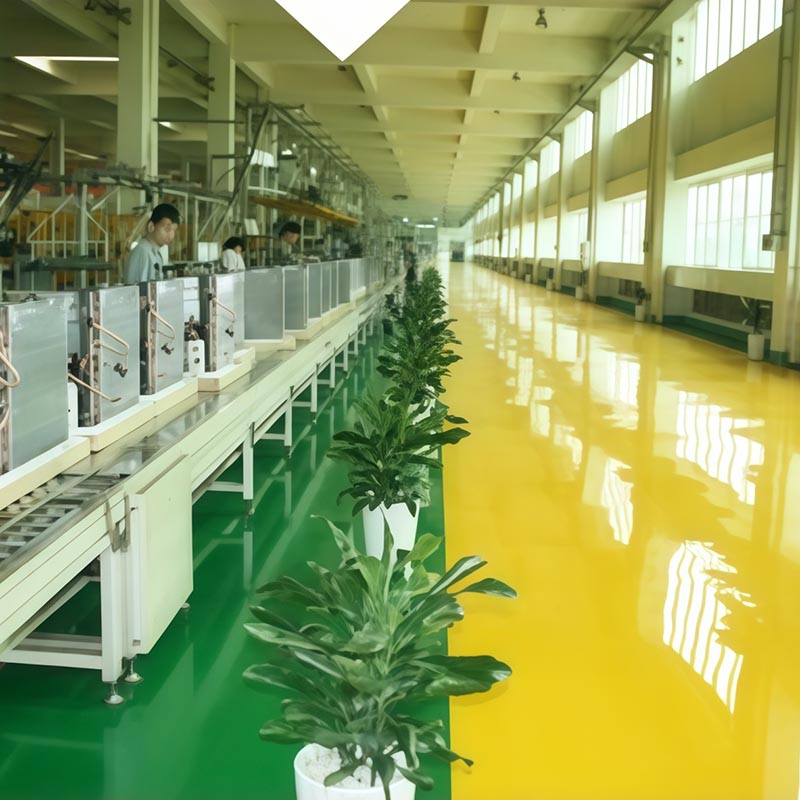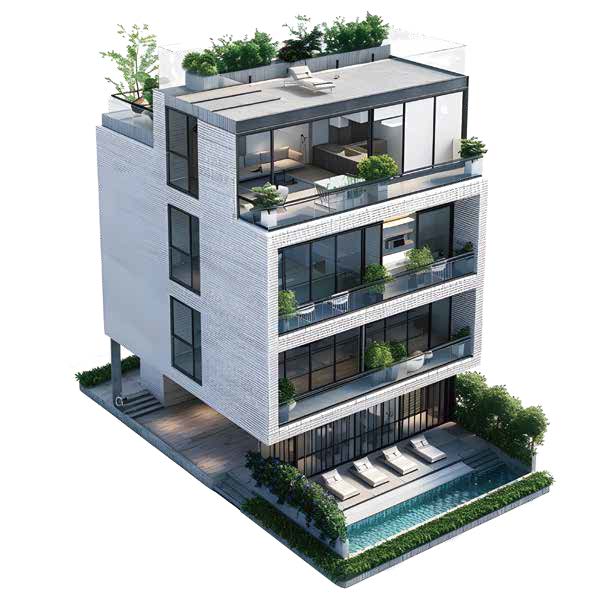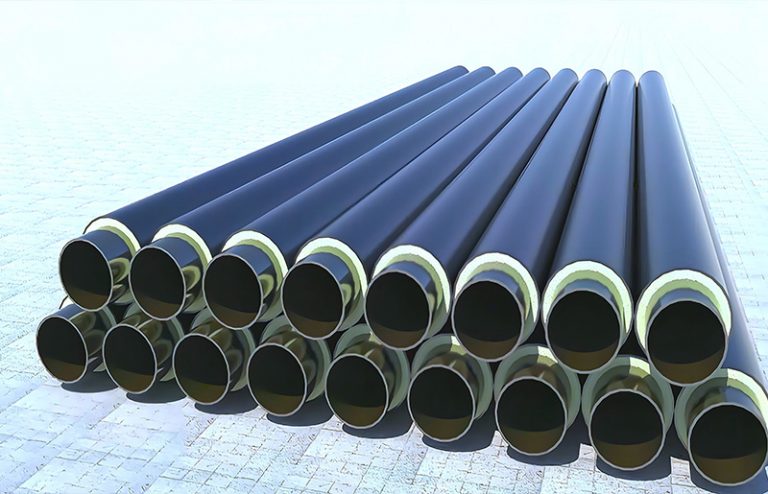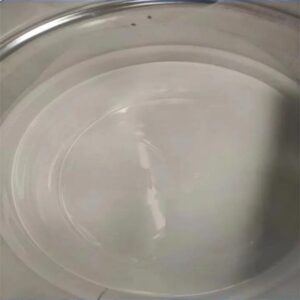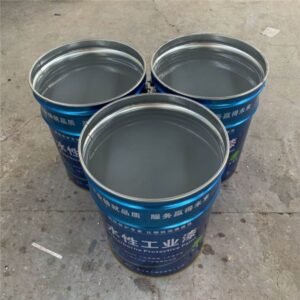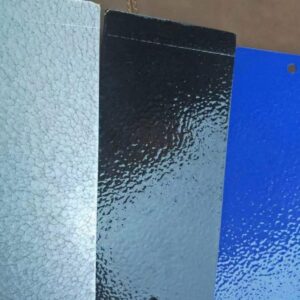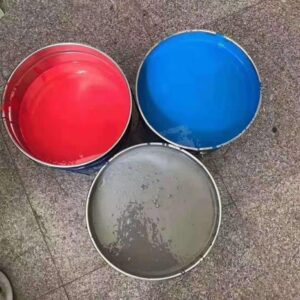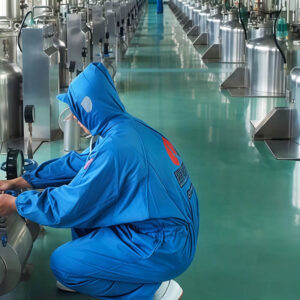WANSHIELD®63120 Waterborne Polyurethane Mortar Floor Coating
The WANSHIELD®63120 water – based polyurethane mortar series includes four models: MD1, MD2, MD3, and MD4. These are four – component water – based polyurethane mortar floor materials. Their composites possess almost all the advantages of organic polymers and inorganic concrete. Each model is designed for specific application scenarios and has unique features, such as chemical resistance, corrosion resistance, load – bearing capacity, and wear resistance.
1. Product Overview
- Chemical and corrosion resistance: Resists common organic/inorganic acids, alkalis, and salts.
- Higher tensile strength than concrete, with superior abrasion resistance. which can withstand heavy use and mechanical stress.
- Higher toughness: Greater flexibility than cement-based products, reducing cracking risks and improving impact resistance.
Product Applications
- MD1: Suitable for light – bearing self – leveling floors in places like underground garages, ordinary storage areas in factories, factory workshops without thermal and mechanical impacts, laboratories, and renovation of old polyurethane mortar self – leveling floors.
- MD2: Mainly used in medium – load – bearing self – leveling floors in food processing factories, dairies, breweries, pharmaceutical intermediate production workshops, laboratories, wet and dry processing areas, cold storage, and large – scale clean warehouses.
- MD3: Ideal for rough, heavy – load, and anti – slip floors in high – mechanical – impact areas, extreme low – and high – temperature areas, and areas with high anti – slip requirements, such as chemical processing plants, pulp and paper mills.
- MD4: Used as a water – based polyurethane mortar topcoat in underground garages, ordinary storage areas in factories, factory workshops without special impacts, and laboratories.
2. Comparison of Product Variants
| Parameter | MD1 (Thin-layer, 1–3 mm) | MD2 (Medium-load, 4–6 mm) | MD3 (Heavy-load, 6–12 mm) | MD4 (Standard, 0.3–1 mm) |
|---|---|---|---|---|
| Applications | Light industrial floors, labs, garages | Food/pharma plants, cold storage | Heavy industrial areas, extreme temps | Warehouses, garages, light workshops |
| Temp. Range | -10°C to 55°C | -20°C to 75°C | -40°C to 140°C (thickness-dependent) | Not specified |
| Thickness | 1–3 mm | 4–6 mm | 6–12 mm | 0.3–1 mm |
| Mix Ratio (A:B:C:D) | 4.2:4:15:0.2–1 | 4.36:4.54:20:0.2–1 | 2.77:2.88:20:0.2–1 | 4.12:4:5.27:0.2–1 |
| Density (kg/mm/m²) | 2.0 | 2.0 | 2.5 | 1.7 |
| Packaging (A/B/C/D) | 4.2/4/15/0.2–1 kg | 4.36/4.54/20/0.2–1 kg | 2.77/2.88/20/0.2–1 kg | 4.12/4/5.27/0.2–1 kg |
Physical Properties
| Property | Test Method (GB/T 22374-2018) |
| Appearance | Visual inspection, Uniform mix, no hard lumps |
| Compressive Strength (7d) | ≥40 MPa |
| Flexural Strength (7d) | ≥10 MPa |
| Abrasion Resistance | ≤0.15 g (500g/100r) |
| Dry Slip Coefficient | ≥0.6 |
| Bond Strength | ≥2.0 MPa |
| Impact Resistance | No cracks/spalling (1kg steel ball) |
| Chemical Resistance* | No blistering/cracking, slight discoloration allowed |
*Includes water, alkali (20% NaOH), acid (10% H₂SO₄), oil (120# solvent), and saline (3% NaCl). The time for alkali resistance test is 24h for MD1 and MD4, and 72h for MD2 and MD3. The values provided in this document are typical test values. The specific data may vary slightly due to different environmental conditions. For our company’s products, the listed data have no binding force in legal terms.
3. Surface Preparation
- For all new and old concrete floors: The concrete strength must reach C25 or above, and the pull – out strength should not be lower than 1.5MPa. Thoroughly remove surface stains and loose soil until reaching the solid concrete layer. For any concrete damaged, loosened, or contaminated by substances due to exposure to chemicals, it should be removed until the solid concrete is exposed.
- For painted old floors: Completely sand off the loose or incompatible old paint coatings. If the underlying concrete surface or a clean, dry, and intact compatible coating is exposed, it can be left without further removal.
- For oil – stained floors: When the oil stains seriously affect the adhesion of the floor coating to the base surface, the oil – stained floors should be thoroughly cleaned and sanded.
- For new concrete floors: Ensure that the floor has passed the curing period and the moisture content is less than 10%. It is crucial to use mobile sandblasting tools and grinding equipment to treat the concrete surface to achieve the correct surface roughness.
- For other surfaces: If the product is to be used on other substrates, please consult ours Technical Department.
- For detailed instructions on base surface treatment, please consult us to obtain relevant materials.
Application Guidelines
- Coating Environment Temperature: 15 – 30°C. The base surface temperature should be at least 3°C higher than the air dew – point temperature.
- Coating Environment Humidity: <80%, and the moisture content of the concrete base surface should be less than 10%.
- Ventilation Conditions: Ensure that the construction site is well – ventilated and dust – free. However, there should be no strong wind to avoid bringing in dust and affecting the appearance.
Mixing:
After determining the stirring time, it should be kept consistent throughout the construction process. Inconsistent stirring time for each group may cause differences in surface color and texture.
- Step 1: Combine A + B + D (1 min @ 300 rpm).
- Step 2: Add C (2–5 min @ 800+ rpm, temp.-dependent).
- Pot Life: 25 min @ 20°C (shorter at higher temps).
- Curing: 24h walkable, 7d full cure (@25°C/60% RH).
- During the mixing process, use a straight – edge trowel to scrape the raw materials adhering to the sides and bottom of the container. This operation should be carried out at least once to ensure complete mixing.
- Only the raw materials in the factory – packed containers need to be fully mixed. Temperature will affect the construction time and product curing time.
- Different mixing machines may lead to differences in fluidity. It is recommended to use the recommended mixing head for mixing.
Primer Coating
- After applying the primer coating, allow it to dry for 24 hours (when the ground temperature is 20°C; the lower the temperature, the longer the curing time). Then, proceed with the surface coating construction.
- If the primer coating has been applied for more than 72 hours or is contaminated, it is necessary to sand and vacuum the surface again before constructing the surface coating.
Packaging Specifications
4. Storage, Transportation Conditions, and Shelf Life
- Storage and Transportation Conditions: The paint should be stored in a sealed, dry, cool, and well – ventilated environment at 5 – 30°C, away from high temperatures and fire sources. During transportation, the materials should be stacked steadily, and the carriage environment should be kept dry, enclosed, and protected from moisture and frost.
- Shelf Life: Starting from the production date, under the required storage conditions, the shelf life of the product in its original packaging is 6 months.
5. Safety & Compliance
Before use, carefully read the construction instructions and warning labels on the packaging container. When constructing, wear a gas mask and other protective equipment. Avoid inhaling paint mist and skin contact with the paint.
PPE Requirements:
NIOSH-approved respirator
Chemical goggles + nitrile gloves
First Aid:
Skin: Soap/water → seek medical help if irritation persists.
Eyes: 15-min flush → immediate ophthalmologist visit.
Fire Rating:
This product is not classified as a flammable liquid, explosive, oxidizer, corrosive, toxicant, or radioactive hazardous material during storage and transportation, and is not a hazardous product.
NFPA 704: 0-1-0
Extinguishing: CO₂/dry chemical
- In the absence of other fire-fighting agents, a large amount of fog-like water can also be used for spraying. After the fire is extinguished, the spilled materials should be cleaned up (refer to the leakage and spillage treatment section).
Leakage and Spillage Treatment
6.Disclaimer
Contact:
| Weight | 5485.71 kg |
|---|


